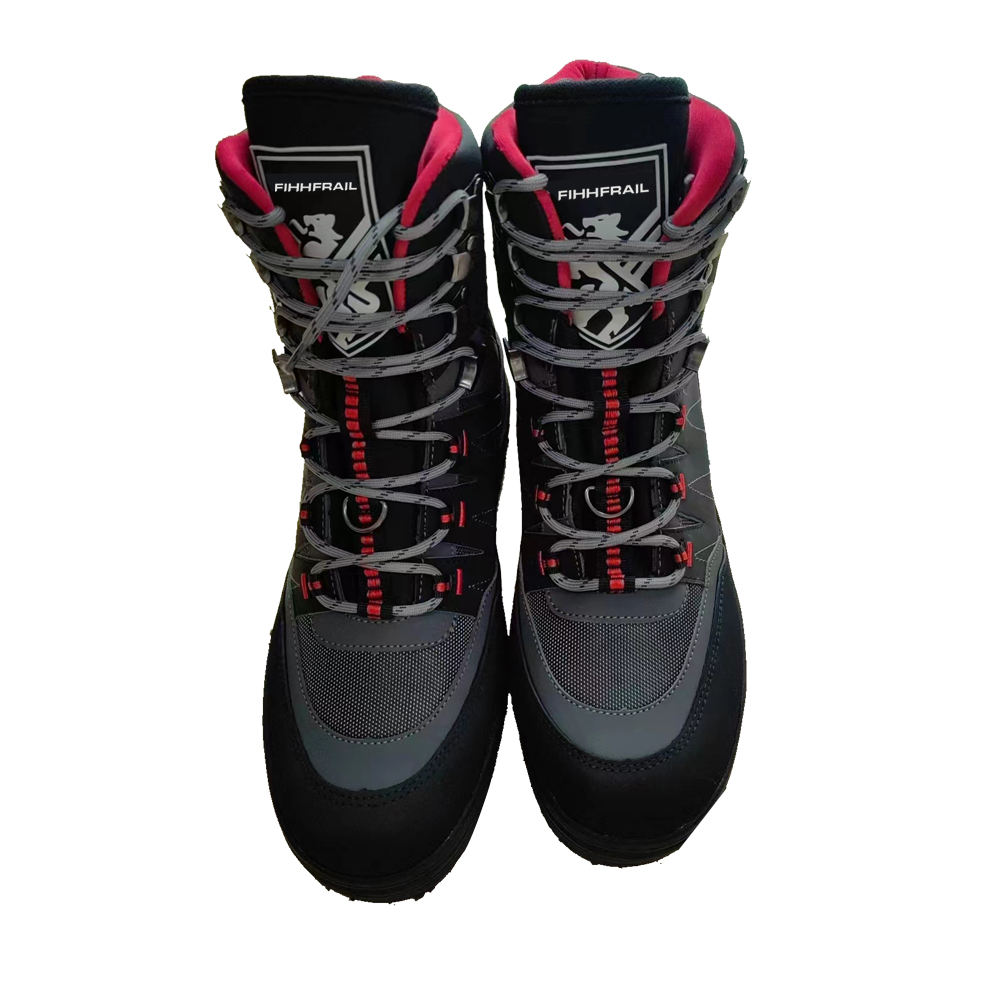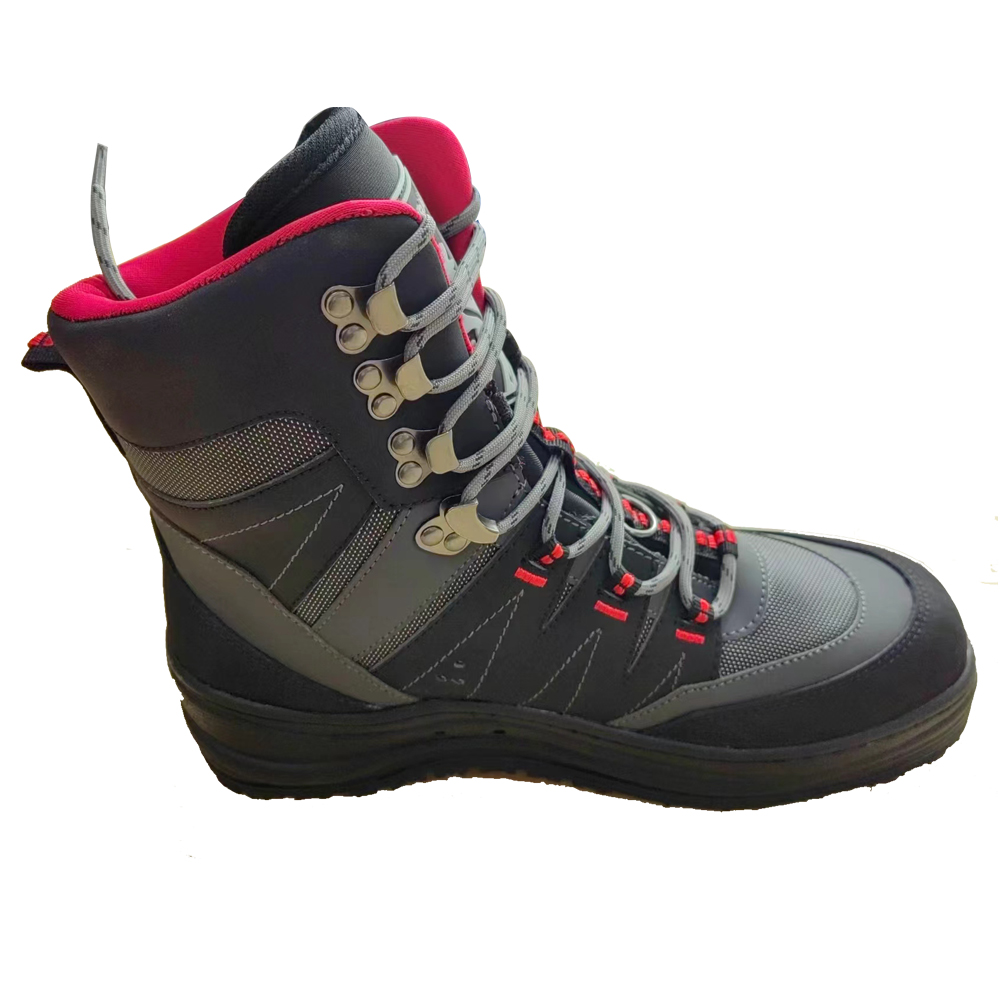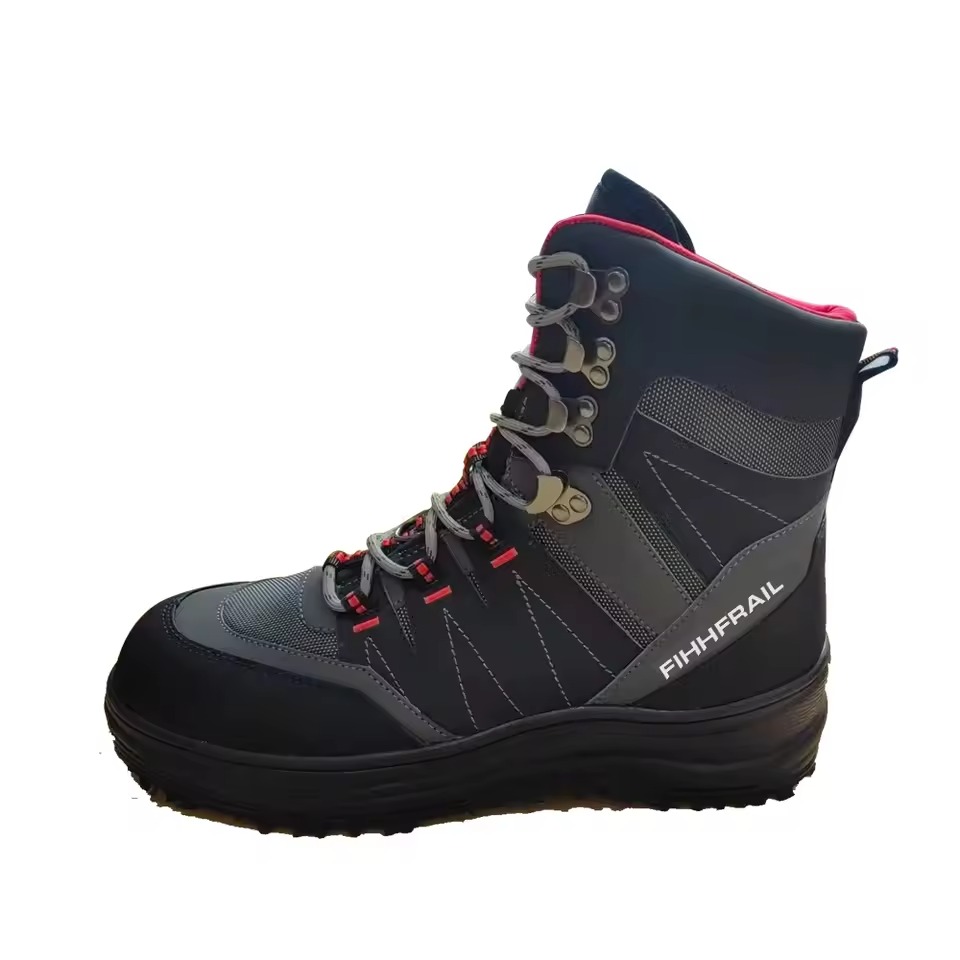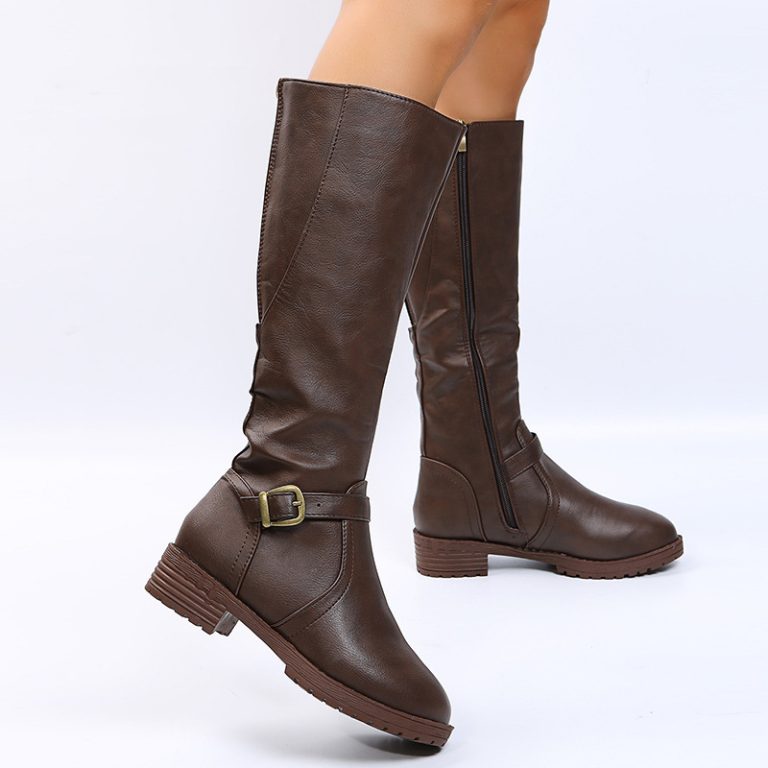History of Engineer Boots
Engineer boots have a storied past that traces back to the early 20th century. Originally designed for working men, these boots were made to provide protection, durability, and comfort. They became iconic for their simple, sturdy design and buckle detail around the ankle, which kept the boots secure on the foot even during rigorous activities.

In the 1930s, engineer boots began to cross over from pure function to fashion. They were especially popular among motorcycle riders who valued the extra protection they offered while riding. The boots’ association with the rebellious spirit of bikers cemented their status as a symbol of rugged American culture.
Post-World War II, the popularity of engineer boots soared as returning soldiers continued to wear their boots. They became a staple in the working class wardrobe. By the 1950s, engineer boots had made their way into mainstream fashion and were being worn by everyone from film stars to the everyday person.
The 1960s and 70s saw engineer boots adopted by the counterculture movement. They were not just boots anymore; they stood as a statement of nonconformity and toughness. This era solidified their place in the fashion world, and they have remained popular ever since.
As we venture into 2025, engineer boots still hold a special place in both fashion and functional attire. They have gone through many adaptations but have always stayed true to their roots of robustness and reliability. They continue to be a favorite for those who value heritage and style in their footwear.
The Evolution of Engineer Boots Design
Over the years, engineer boots have evolved in both form and function. Originally built for protection and durability in demanding workplaces, they have transformed into versatile fashion statements. The design of engineer boots has gone through significant changes while maintaining their distinctive characteristics, such as the ankle buckle and sturdy construction.
In the mid-20th century, modifications began as engineer boots entered the mainstream fashion scene. Designers started experimenting with different materials, like softer leathers and synthetic fabrics, to suit everyday wear. The classic black leather gave way to a variety of colors and textures, broadening their appeal.
The structure of the boots has also seen innovation. The traditional heavy sole has been adapted to include more lightweight and comfortable options. This has made engineer boots more wearable for extended periods, beyond their original utilitarian purpose.
Aesthetically, engineer boots have diversified. Now they feature intricate stitching details, different heel heights, and varied shapes. Some modern versions of engineer boots have more refined lines, appealing to a crowd that values elegance along with the boots’ inherent ruggedness.
As we look towards 2025, the design of engineer boots continues to be influenced by contemporary fashion trends. They are now available in a wider range of fittings to accommodate different foot shapes and sizes. The classic silhouette has been tweaked to fit more snugly, ensuring comfort without compromising on the style that makes engineer boots so iconic.
Despite these changes, the core essence of engineer boots remains the same. They symbolize a blend of tradition and innovation, serving individuals who seek a timeless yet modern piece of footwear. As engineer boots continue to evolve, they prove to be versatile for both work and casual settings, reflecting a rich history that resonates with each new design iteration.

Key Features of Engineer Boots
Engineer boots are known for certain key features that have made them enduring classics in both workwear and fashion. Recognizable by their signature design elements, these boots boast durability, comfort, and versatility. Here we’ll delve into the key characteristics that make engineer boots a staple.
Sturdy Leather Construction
High-quality leather is the hallmark of engineer boots. This robust material offers protection and long-lasting wear. Thick, durable leather guards against the elements and work hazards, while also molding to the foot over time for a personalized fit.
Ankle Buckle
A distinctive buckle wraps around the ankle, providing both function and style. The buckle ensures a secure fit, keeping the boots snug on the foot, an essential feature for the practical origins of the boots.
Solid, Nonslip Sole
A solid sole with a non-slip grip is another classic attribute. Originally designed for safety on work sites, this feature continues to provide stability and traction in various terrains.
Good Year Welt Construction
Many engineer boots feature Goodyear welt construction, a process of stitching that attaches the sole to the upper. This durable method allows for soles to be easily replaced, extending the life of the boots.
Mid-Calf Height
The traditional engineer boot reaches mid-calf, which protects the lower leg. This height is both a functional aspect for riders and workers, and a style preference for fashion purposes.
Engineer boots have remained in demand due to their practical design and timeless look. They cater to those who put a premium on footwear that delivers performance without sacrificing style. When selecting engineer boots, these features ensure they’re not just an ordinary pair of boots but an investment in quality and history.
How to Style Engineer Boots
Engineer boots are versatile, lending themselves to various styles from rugged to refined. To perfectly style engineer boots in 2025, embrace both classic looks and current trends.
For a Classic Biker Look
Pair your engineer boots with a leather jacket and denim. Choose dark jeans and a black or brown jacket. This timeless ensemble is perfect for motorcycle rides or casual outings.
With Modern Workwear
Combine engineer boots with work pants and a durable shirt. Opt for earth tones or neutral colors. This modern workwear style is practical and fashionable for everyday wear.
In a Casual Chic Way
Match your boots with a midi dress or skirt for a casual chic vibe. Add a light jacket or cardigan. This combination balances toughness with femininity and is great for a day out.
For Outdoor Adventures
Wear engineer boots with cargo pants and a utility jacket. Go for functional fabrics and layer with a warm sweater. This outfit is ideal for outdoor activities, offering comfort and style.
In an Edgy Urban Ensemble
Style your boots with skinny jeans and an oversized hoodie. Layer with a long coat for a sleek urban edge. This look is contemporary and perfect for city life.
When styling engineer boots, prioritize comfort and your personal style. Mix and match pieces to create unique outfits that showcase the versatile nature of these classic boots. Remember to maintain balance in your outfit, letting the engineer boots be the focal point or a complementary piece, depending on the occasion.
Top Engineer Boots Brands to Consider in 2025
Selecting the right brand for engineer boots can define both your comfort and style. With so many brands out there, it’s essential to know which stand out in 2025. Here are the top brands to consider when shopping for your next pair of engineer boots.
Red Wing Shoes
Red Wing Shoes offers engineer boots known for their craftsmanship and durability. Expect tough leather, solid construction, and classic style. They remain a favorite for their quality and heritage.
Frye
Frye boasts a range of boots, from vintage-inspired to modern designs. They excel in providing both rugged and refined options for all preferences.
Wolverine
Wolverine merges tradition with technology. Their boots feature durable materials and advanced comfort features, suitable for work and casual wear.
Timberland
For those with an eye on sustainability, Timberland’s commitment to the environment is reflected in their boots. They offer sturdy, eco-conscious footwear without compromising on style.
Chippewa
Chippewa’s boots are synonymous with American craftsmanship. Their boots provide protection and an iconic silhouette, appealing to the traditionalist.
Dr. Martens
Dr. Martens are known for their unique air-cushioned soles and edgy aesthetics. Their engineer boots are ideal for those looking to make a statement.
These brands have earned their reputation in the engineer boots market for their focus on quality, style, and innovation. As you explore options, consider your needs, whether it’s for fashion, function, or a bit of both. Keep an eye out for these brands in 2025, as they continue to set the standard for the ideal pair of engineer boots.

The Role of Sustainability in Engineer Boot Manufacturing
The manufacturing of engineer boots has seen a crucial shift towards sustainability. This reflects a growing consumer demand for eco-friendly options. In 2025, sustainable practices are no longer an afterthought but a core aspect of boot production.
Use of Recycled Materials
Manufacturers are increasingly using recycled materials in boots. From upcycled leather to reclaimed rubber soles, recycled components reduce waste and the carbon footprint.
Eco-Friendly Tanning Processes
Leather tanning often involves toxic chemicals. Brands are now adopting vegetable tanning, a method less harmful to the environment.
Renewable Energy in Production
Forward-thinking brands power their facilities with renewable energy sources. Solar and wind energy reduce reliance on fossil fuels.
Biodegradable Packaging
Sustainable boots come with biodegradable packaging. This reduces plastic waste and the impact on landfills.
Fair Labor Practices
Sustainability also touches on ethics. Fair labor practices ensure workers’ rights and well-being in the manufacturing process.
In summary, sustainability in engineer boot manufacturing is vital. It reassures customers that their footwear choices are responsible and align with their values.
How to Choose the Right Pair of Engineer Boots
Selecting the perfect pair of engineer boots involves several factors. To make the right choice in 2025, bear in mind these essential tips:
Consider the Boot’s Purpose
First, think about how you plan to use the boots. Are they for work, fashion, or both? This decision will drive the features you need, such as sole durability or aesthetic design.
Check the Leather Quality
Opt for boots made from high-grade leather. Quality leather ensures longevity and a boot that molds to your foot’s shape over time.
Look for Good Year Welt Construction
Seek out boots with Goodyear welt construction. This is a sign of durability and allows for the sole to be replaced, extending the boot’s life.
Ensure a Proper Fit
Make sure the boots fit well. They should feel snug but not tight, with room to wiggle your toes. Over time, a well-fitting boot becomes even more comfortable.
Evaluate Comfort and Support
Look for boots with a comfortable insole and support for your arches. Comfort is crucial if you’ll wear them for hours.
Pay Attention to the Sole
Choose a sole based on your activity level. If you’re active, a non-slip and sturdy sole is necessary for safety and traction.
Consider the Brand’s Reputation
Research the brand’s reputation for quality and service. Brands like Red Wing Shoes and Frye are renowned for their dependable boots.
Reflect on Style Preferences
Pick a style that reflects your personal taste. Whether classic or modern, your boots should match your wardrobe and lifestyle.
Prioritize Sustainability
If eco-friendliness is important to you, look for brands that use sustainable practices and materials.
Taking these points into account will lead to a satisfying purchase of boots that suit your requirements. They should offer a blend of durability, comfort, style, and responsibility towards the environment.
Care and Maintenance Tips for Engineer Boots
Proper care and maintenance of your boots can significantly extend their lifespan and maintain their appearance. Whether you’ve invested in a pair for work or style, following these tips will ensure your boots stay in top condition through the years.
Regular Cleaning
Keep your boots clean by wiping away dirt and dust after each wear. For thorough cleaning, use a leather cleaner and a soft cloth.
Conditioning the Leather
Apply a quality leather conditioner regularly to keep the leather from drying out and cracking. This step also helps preserve the boots’ suppleness.
Waterproofing
Protect your boots from water damage with a waterproofing treatment. This is key if you often wear them in wet or damp conditions.
Sole Inspection
Check the soles periodically for signs of wear and tear. If they are damaged, consider having them replaced by a professional cobbler.
Proper Storage
Store your boots in a cool, dry place away from direct sunlight. Use a boot tree or stuff them with newspaper to maintain their shape.
Avoiding Harsh Conditions
Whenever possible, avoid exposing your boots to harsh chemicals or extreme temperatures, as these can cause harm to the materials.
By integrating these simple care steps into your routine, you will not only keep your boots looking their best but also enjoy their comfort and durability for many seasons.

